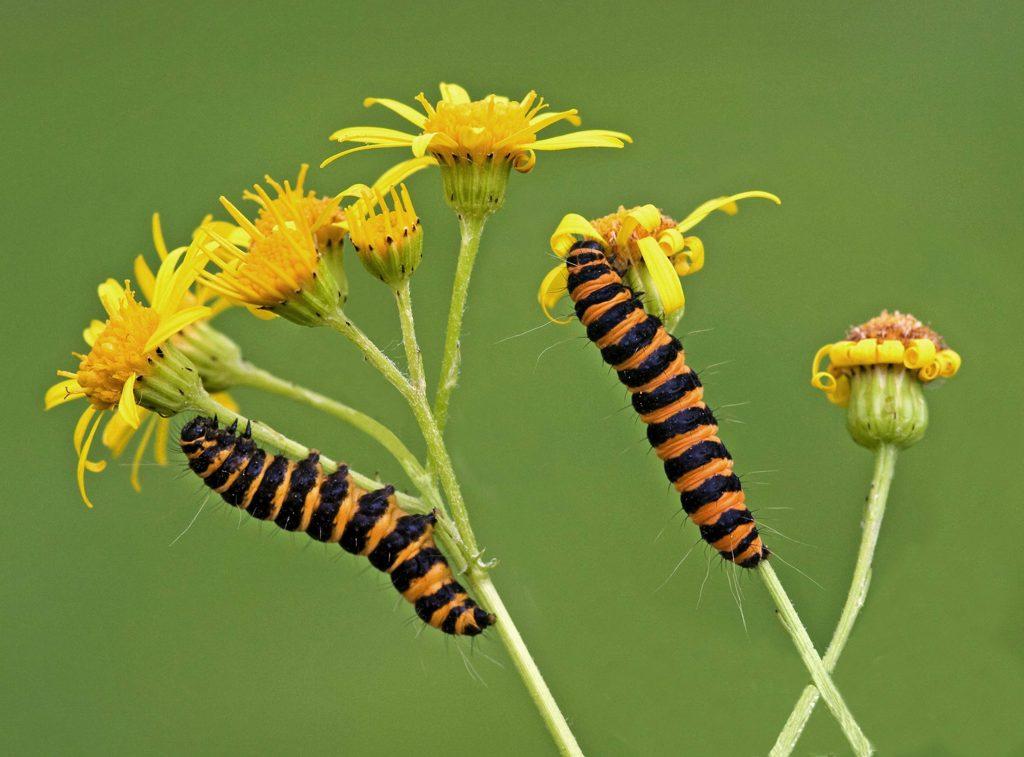
The riches of ragwort
Often unfairly maligned, ragwort is nevertheless a valuable wildflower, providing a home and a source of food to no less than 77 insect species – 30 of these use the plant as their sole food source!
A dash of colour
This delicate plant, with its spray of golden-petalled flowers, flowering from June until November, has deeply cut and toothed leaves giving a ragged appearance from which the plant derives its name. It is a biennial and an opportunist, readily colonising patches of bare ground; common along roadside verges, found within our young planting (although it does diminish as the canopy closes) and at the edges of the Forest.
Three species of ragwort are found in the Heart of England Forest: common, hoary, and Oxford ragwort. Whilst the first two are natives, the third was introduced from Sicily by Oxford University botanists during the 16th century. These ragwort species can be found to varying degrees around the Heart of England Forest, although steps are taken to ensure they are responsibly managed.
An important plant
While ragwort provides food or a home for many species of insect including moths, butterflies, beetles and hoverflies, there are some for whom it is more important than others. Of the 30 species that feed on ragwort alone, 10 of these are classified as very rare and are on the International Union for the Conservation of Nature (IUCN) Red List. These include the picture winged fly, the scarce clouded knot horn moth and the Sussex emerald moth.
Another moth that relies on ragwort for its survival is the brightly-coloured cinnabar moth and it has a specific different reason for this reliance. Ragwort contains several naturally occurring chemical compounds known as alkaloids. These alkaloids can be poisonous to some animals – cinnabar moth caterpillars feed on ragwort, ingesting these alkaloids, which then make them extremely unpalatable to predators. If you spot these caterpillars or the adult moth during the summer months in the Heart of England Forest then do email us a photo – we always love to hear from you.
The need for control
Because it can grow in abundance, common ragwort is subject to the Ragwort Control Act of 2003. This act provides a guide for landowners seeking to reduce common ragwort’s proliferation. Contrary to popular belief, the act places no legal obligation on landowners to control its spread, although it is understandable that many wish to do so, especially if it is prevalent on pasture land.
Sometimes known as the scourge of horse owners because of its potential toxicity to their animals, ragwort is, in fact, only likely to be harmful to them when ingested by them in its dried form (horses steer clear of the bitter taste of it in its natural form!). It is, therefore, essential to control ragwort if the pasture is being cut for hay. Around the Heart of England Forest responsible management means that steps are taken to control it where appropriate, particularly when within 50 metres of pasture land.
So, while it is easy to dismiss ragwort as ‘just another weed’, it clearly plays an important role in the ecosystem – without it many species might be lost forever. Next time you’re out and about and see any interesting insects on these vivid flowers, why not send us a photo of them through Facebook, Instagram or Twitter.



